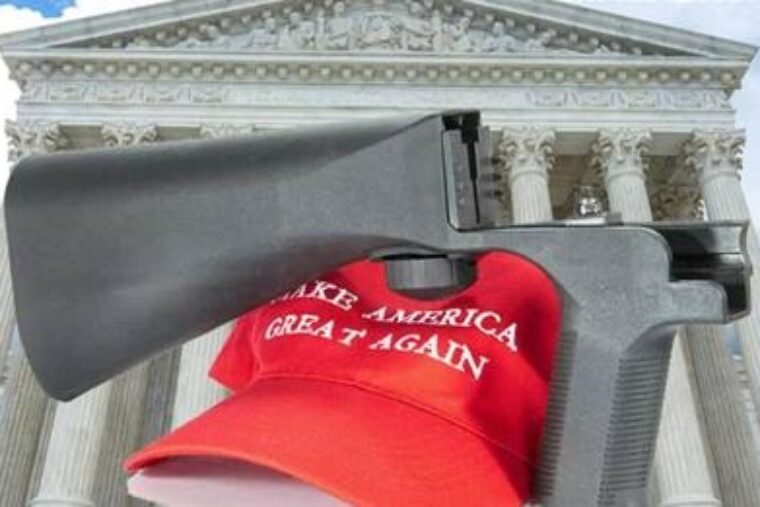“Left unsaid is where Congress derives such authority in the first place, as the power to regulate and ban arms is nowhere delegated to it in the Constitution. The only clear mandate is “the right of the people to keep and bear arms shall not be infringed.” By any branch of government.”
Three Rules enacted by the Bureau of Alcohol, Tobacco, Firearms and Explosives (ATF) were thwarted by court orders in recent weeks. Federal courts in Texas blocked licensing restrictions on private sales in State of Texas v. BATFE, and a Rule redefining pistol braces as restricted National Firearms Act (NFA) weapons was vacated in Mock v. Garland. While the Justice Department is sure to appeal the licensing and pistol brace setbacks, the big win for gun owners was the United States Supreme Court’s (SCOTUS) 6 -3 ruling in Garland v. Cargill that “ATF exceeded its statutory authority by issuing a Rule that classifies a bump stock as a ‘machinegun’.”
“Michael Cargill surrendered two bump stocks to ATF under protest. He then filed suit to challenge the Rule under the Administrative Procedure Act,” the majority opinion written by Justice Clarence Thomas explained. “As relevant, Cargill alleged that ATF lacked statutory authority to promulgate the Rule because bump stocks are not ‘machinegun[s]’…”
Proponents of the ban missed the point, whether due to ignorance or disingenuousness being irrelevant.
“When I see a bird that walks like a duck, swims like a duck, and quacks like a duck, I call that bird a duck,” Justice Sonia Sotomayor wrote in the dissent. And anti-gun Sen. Chris Murphy added to public confusion even more by telling CNN’s State of the Union that the Supreme Court was “ready to fundamentally rewrite the Second Amendment,” even though Cargill was not a Second Amendment case.
By David Codrea



